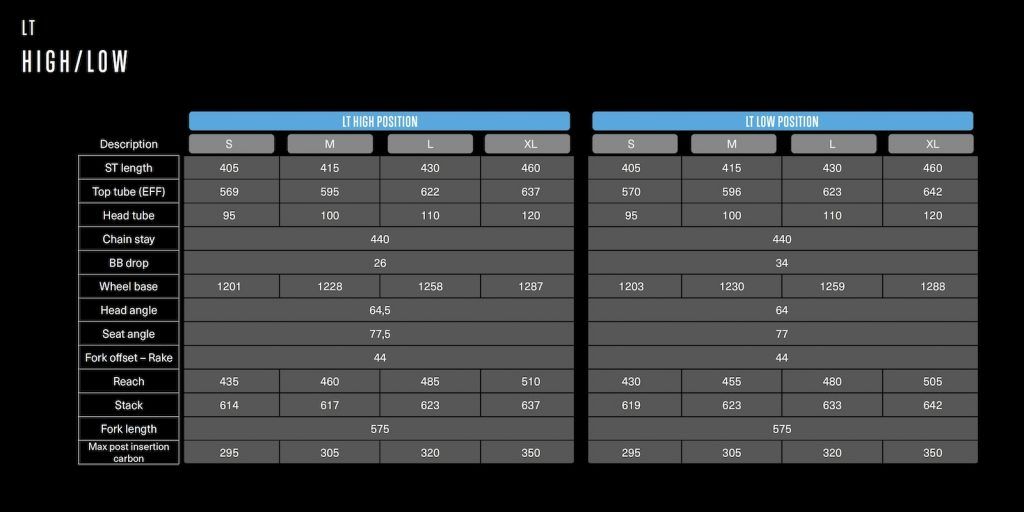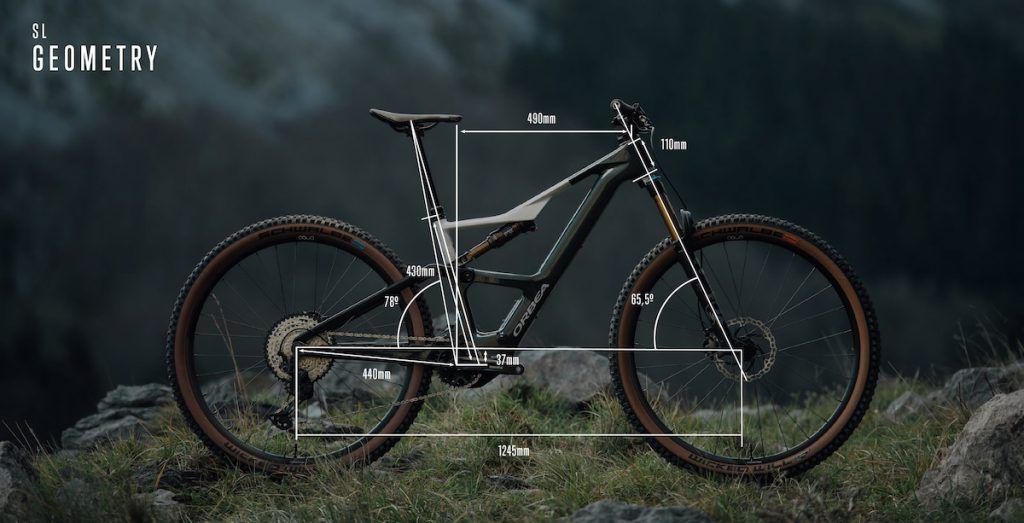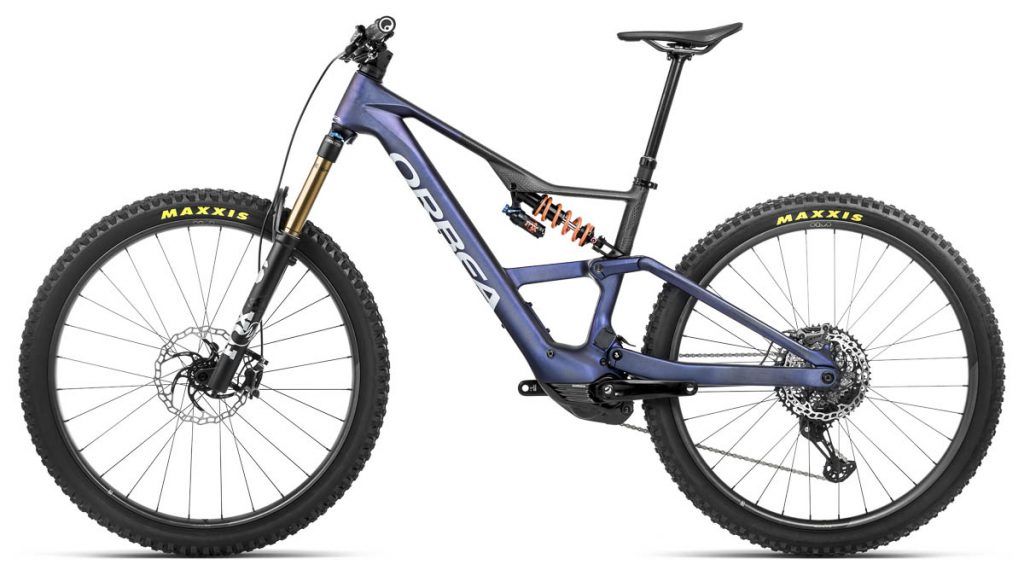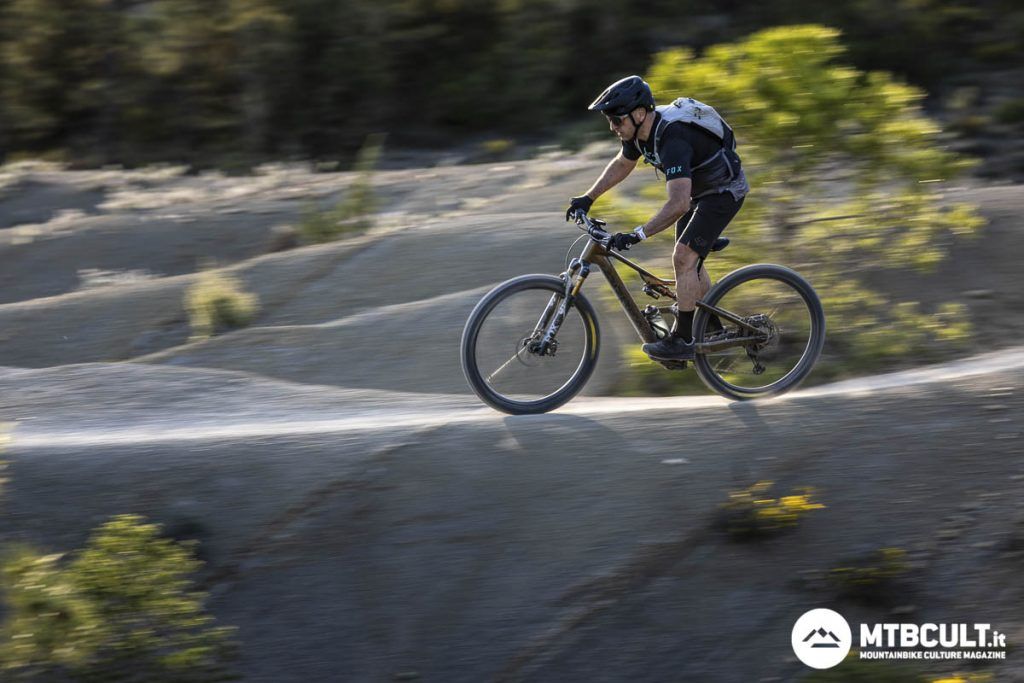The new Orbea Rise changes everything again and it is not a figure of speech, nor an advertisement.
It is the result of my contact with the updated version of Rise.
A profound update to the point of introducing a new concept of light e-MTB.
Light no longer due to the assistance (60 Nm), but, finally, due to the lightness of the scale.
It is inspired in every way by the Occam and in fact, like the Orbea trail bike, it is available in the SL (140 mm travel) and LT (150 mm travel) versions.
Let’s go straight into the details with the video and then I invite you to continue reading to discover other construction features:
New Orbea Rise: why does everything change?
First of all the Shimano Ep801 motor rises from 60 to 85 Nmthat is, it delivers all the power it is capable of.
But not only that: Orbea, together with the support of Shimano and after a development process that lasted 3 years, managed to provide this motor with greater thrust at low cadence (from 30-40 rpm), greatly improving the use of this e-Mtb on very steep and technical climbs.
This version of the Ep801 is still called RS, but with the addition of the acronym MC, Mountain Control, due to the greater driving torque it is capable of.

Then the batteries, with cells of greater energy density and denominations of 420 and 630 Wh, selectable at the time of purchase, plus the optional 210 Wh range extender.
Let’s briefly look at the most salient details:
– new Shimano EP801 RS MC engine (Mountain Control)
– until 85 Nm already available at 30-40 pedal strokes per minute
– two assistance profiles: RS (max 54 Nm) ed RS+ (max 85 Nm)
– two battery options, 420Wh and 630Whselectable when ordering the bike
– optional range extender from 210Whsmaller than the previous one in terms of nominal capacity, but not in actual capacity
– in total you can have them up to 840 Wh of battery
– the 21700 5.8 Ah cells are capable of a 16% more charge at the same weight: greater energy density
– Rise SL from 140 mm of travel (and 140 mm fork)
– Rise SL M-LTD: weight of 16.26 kg (detected) in size M, without pedals
– Rise LT from 150 mm of travel (and 160 mm fork)
– Rise LT M-Team: weight of 17.9 kg (declared) in size M with carbon wheels
– weight only frame, without shock absorber, motor and paint, with hardware in size M: 2.2kg
– greater configurability and color choice via MyO
– new structure of the front triangle, more rigid and inspired by that of the Occam
– stiffer chassis and robust for greater driving precision
– stiffness optimized for the 4 frame sizes
– concept step’n’deep: S and M sizes can now have seat posts with up to 200 mm travel (230 mm on L and XL)
– Attitude Adjust: Quick adjustment of the bottom bracket height with the flip chip on the shock which changes the head angle by 0.5° and the bottom bracket height by 8mm
All these innovations, once on the trail, radically change the way you use the Rise.
Before talking about autonomy, height differences and performance, let’s talk about the 3 battery options.



New Orbea Rise: the batteries
The Rise 2025 is offered with two battery options: 420 and 630 Wh.
Both are housed in the oblique tube and are not removable: this choice allows the weight to be significantly reduced and the structural solidity of the frame to be kept high.
Both batteries are fixed to the down tube with two screws, visible externally, and have the following weights:
420Wh battery: 1,960 kg
630Wh battery: 2,880 kg
210Wh range extender: 1,037 kg


As mentioned, the batteries have an energy density greater than 16% and this means that the range extender, despite having a lower nominal capacity than that of the previous Rise (252 Wh), in reality the actual capacity is completely comparable.

How much do batteries cost?
When ordering the new Orbea Rise, opting for the 630 Wh battery instead of the 420 Wh one costs €199 plus, while the range extender continues to cost €449.
In essence, it is possible to equip the new Orbea Rise, both in the SL and LT versions, with batteries with maximum capacity up to 840 Wh


New Orbea Rise: geometry
Both the SL and LT versions benefit from a frame whose rigidity has been increased where actually necessary.
On the front triangle you can see the reinforcement crossbar, in Occam style, and the rear end, generously strengthened compared to the previous Rise, has a length of 44 cm on both versions.
Before going into the details of measurements and angles, it should be noted that the system is present on the Rise LT Attitude Adjusti.e. a flip chip on the shock absorber attachment (photo below, also inherited from Occam) which allows you to modify the steering angle by 0.5° and the height of the bottom bracket by 8 mm.
It must be said that the speed with which you can switch from High to Low position is finally really quick and feasible even on the trails.

Below is the geometry of the new Orbea Rise LT, referring to size M, and, below, the diagram of the geometries of the 4 sizes:


Below is the geometry of the new Orbea Rise SL, not equipped with Attitude Adjust, referring to size M:



New Orbea Rise: prices
Today, May 2, the new Rise will be available in 4 trim levels, namely:
Orbea Rise SL M-LTD: €11,999
Orbea Rise SL M10: €7999
Orbea Rise LT M-Team: €10999
Orbea Rise LT M10: €8499








New Orbea Rise: autonomy
The test carried out on the splendid paths of Aìnsa in Spain revealed both the dynamic qualities of this vehicle and the performance of the engine and battery in terms of autonomy.
Before reading the results, consider these premises:
– the paths I cycled on were on average very demanding;
– my body weight, including backpack, is 87 kg;
– I have not changed the assistance parameters with the Shimano app;
– the battery of my Rise LT M-Team was 630 Wh
– all 3 exits were carried out with RS+ mode (85 Nm)

Yes, the results are very interesting.
It should be noted that in the 2nd exit, the one carried out almost entirely in Boost and at a very fast pace, the starting charge was not 100%, but 83% because, due to time constraints, it was not possible to restore the total charge.
Same goes for the 3rd exit: 98% instead of 100%.
The first outing, the only one with a fully charged battery, however, really says a lot: almost 600 meters of altitude difference with the two highest assistance levels and a residual charge of 67%.
To better understand this result I remind you of the premises I made just above…

New Orbea Rise: the guide
If the autonomy is exciting (and it could become even more so considering the range extender), the driving is no different.
The reason for the high-sounding title of this article is slowly being revealed: the new Rise, in fact, is a new e-MTB concept on which Orbea has been working for 3 years.
While riding I appreciated the overall balance between weight distribution, level of rigidity, suspension tuning (made specifically with Fox) and center of gravity.


Everything meant that, in an instant, I felt truly at home on trails that were anything but easy.
In some cases we found ourselves facing sections of the EWS Specials which took place right there a few years ago, in Aìnsa, and the Rise didn’t seem out of place to me.
If anything, my limits emerged, especially when I tried to follow Damien Oton…
The 3 outings with the new Orbea Rise made me want to try it and get to know it even better, which will happen when I have the opportunity to take it on my trails.
I hope soon…

New Orbea Rise: who do I recommend it to?
Technically the new Rise is still aimed at the audience that the previous Rise was aimed at.
Except that now, instead of profiles 1 and 2 of the previous one, there are the RS profiles (up to 54 Nm) and RS+ (up to 85 Nm), which is why the potential audience is… anyone interested in an e- MTB.
With an even more customizable power level and first-class lightness.

Speaking of lightness: the Rise M-Team in size L that I had available (photo above), with 630 Wh battery, Maxxis Minion DHR II DD rear tire, Fox spring shock and 240 mm Fox Transfer seatpost, had a weight which was well above the declared 17.9 kg of the lightest M-Team configuration.
According to the Orbea technicians I was close to 19.7 kghowever a very respectable result, given how it fares in driving and with battery life.






In conclusion…
Based on the sensations gained in two days of testing, I could say that this new Rise really calls into question the current full power e-MTBs which, with weights starting from 22 kg (when it goes very well…), are transformed into MTBs. electrics belonging to the past.
It is not a definitive conclusion, let’s be clear, but it is certainly something that will create a real watershed in our sector.
Cannondale started with the Moterra SL and now Orbea with the new Rise is once again showing the way for all the other brands.
Congratulations Orbea!
To learn about and configure the new Orbea Rise click here
Everyone here our articles, insights and tests on e-MTBs









































